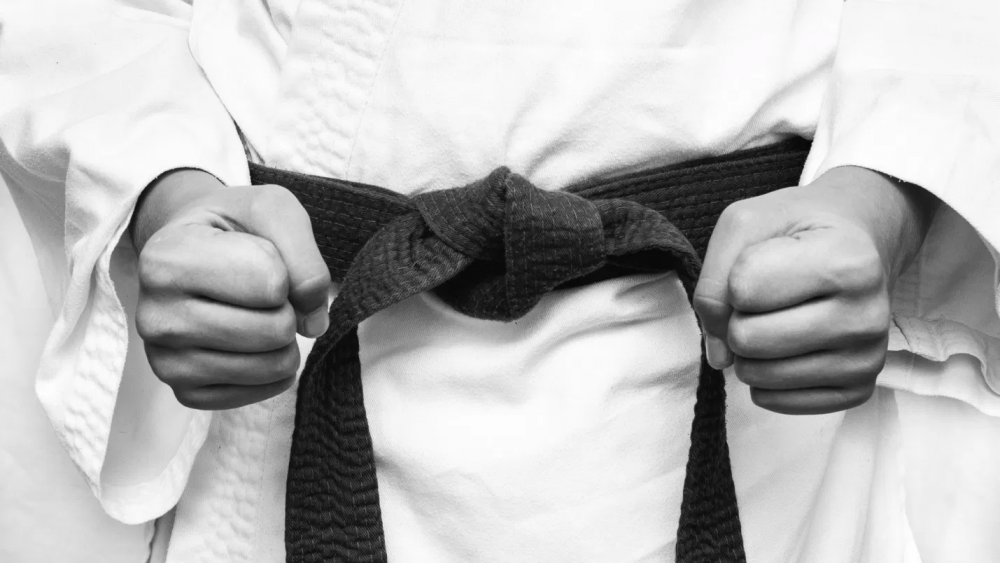Black karate belt
Like most Japanese combat practice, karate graded beginners and masters, and color plays a key role in this hierarchy. It symbolizes the rank, level of mastery of its owner and motivate the fighter constantly improve body and spirit.
Karate fighter begins with a white belt. This color symbolizes the birth of a fighter, new life. Together with fighter achievements, the color of the belt changes (yellow, orange, green, brown) to black. Black color is a merge of all previous colors. It symbolizes the end of the day and the beginning of night — a new way for a fighter.
Color tradition. Initially, belt acquired a characteristic color during trainings. The white belt saturated with sweat and becomes yellow as result of hard, daily trainings. After a while, the belt became a dark orange color from the blood from the pounded calluses. After months of training in nature, regularly contact with the grass, the belt became green. After many years of training, the belt become brown, and then black.
The manufacturing method of color belts and black are significantly different. To begin with, the name of the owner and his rank are stitched on the black belt and such a belt remains with the fighter, while the colored belts change one after another. In addition, colored belts are made from ordinary dyed fabric, while black is not dyed at all: it is white, sheathed in black fabric. Such manufacturing technology has a philosophical aspect. The upper layer of black fabric will wear out over time, so the belt of real karate master look like bunches of black rags hanging on a white belt. A shabby belt is evidence of frequent, intense training and reflects the owner’s huge combat experience. Belt owner becomes a real master when all rags disappear from the belt.

